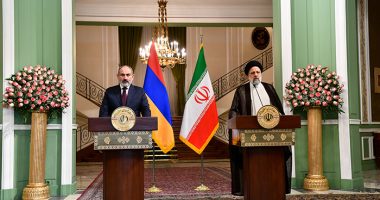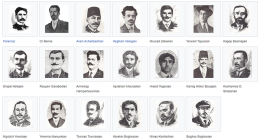By Andrew Finkel


No one questions that the assailant is mentally unhinged. The question is whether the madness and vitriol brewed in his veins was not stimulated by the viciousness of the political discourse in his country.
Next week marks the fourth anniversary of the assassination of the Armenian newspaper editor Hrant Dink. As in the Tucson shooting, the perpetrator was soon caught, although unlike in even a deep red state like Arizona, the apprehending officers did line up to have their photograph taken with the youth they regarded to be a hero. And, as in America, much debate ensued over whether the assassination was the work of one warped psyche or the product of an atmosphere of hate. There are differences, however. In the case of Congresswoman Giffords people might describe the atrocity as something waiting to happen. In the case of editor Dink, it seems increasingly as if it were an atrocity which the authorities wanted to happen.
The Dink family’s lawyer, Fethiye Cetin, has produced a fourth year report on his death which documents, with chilling and detached detail, the conduct of individuals in public employ who appear to have systematically targeted the editor for public vilification and then stood with their hands in their pockets while the seeds of hatred took root and nationalist thugs sought to punish Hrant Dink for imagined offenses to their creed. Ms Giffords proved tragically prophetic in condemning as incitement acts like the map posted by Sarah Palin’s team which had Giffords’ Tucson electoral district in the crosshairs of a rifle sight. Such acts ‘have consequences,’ she said at the time.
The far more deliberate targeting of Hrant Dink also had consequences. And it is becoming increasingly clear that his being singled out was not a bit of rhetorical excess, but part of a deliberate strategy to provoke violence. In 2004 the editor was interviewed by the deputy governor of Istanbul about an article in which he identified Ataturk’s adopted daughter, the aviator and nationalist heroine Sabiha Gokcen, as an Armenian orphaned in 1915. Present at the interview were intelligence officers who were subsequently indicted in the Ergenekon trials. Before his death, Hrant Dink wrote of being deliberately targeted and yet four years after his body hit the pavement outside his office, prosecutors are still looking the other way, trying not to connect the dots. Even those who want to see Ergenekon succeed in discrediting the military’s opposition to the government, and who have been busy constructing a flow chart of ever elaborate conspiracies, are reluctant to notice the impunity with which Hrant Dink’s death was engineered. At the moment what seems to unite the two sides of the Kulturkampf in Turkey is the desire to turn a blind eye. What should unite them is a sense of justice
“Today’s Zaman” daily.










